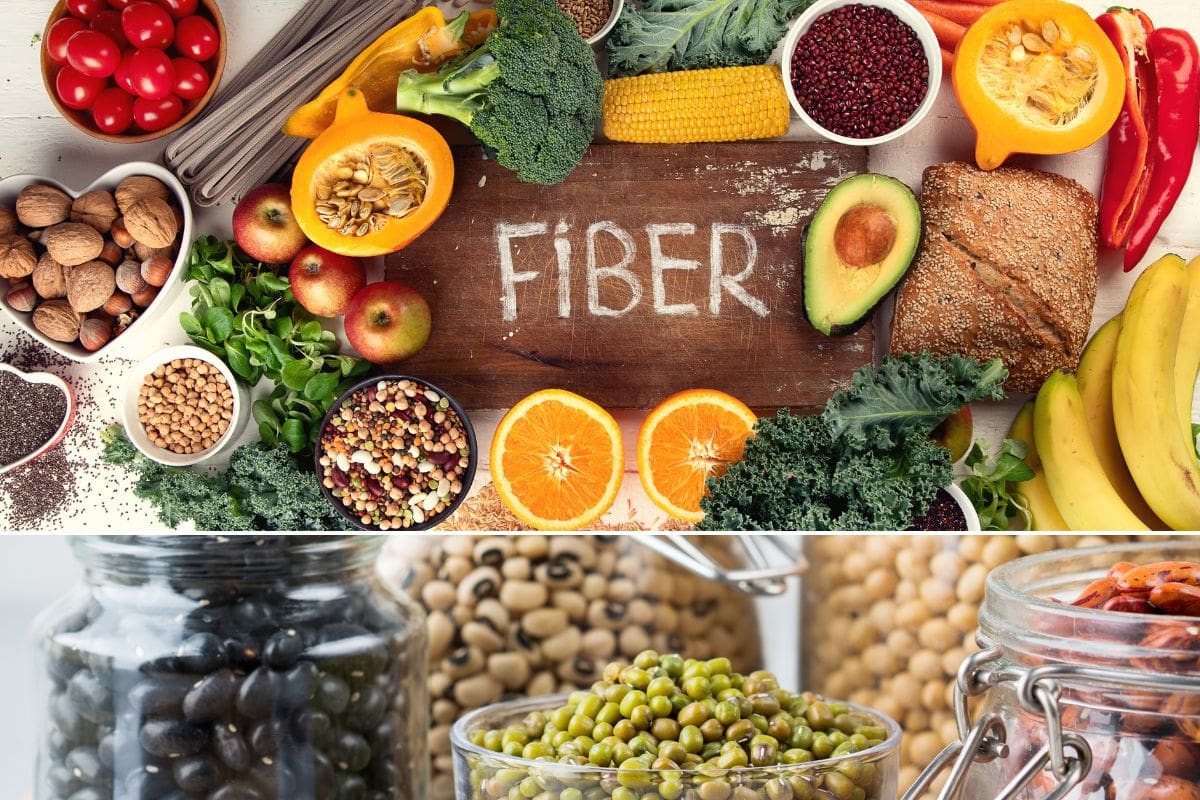Let’s talk about fiber! Arguably the least glamorous of the main nutrients of food, fiber is extremely important, nonetheless. The benefits of fiber are supported by an overwhelming amount of evidence.
There are two types of fiber: soluble and insoluble fiber.
SOLUBLE FIBER
Soluble fiber dissolves or swells in water, forms a kind of gel, and has numerous health benefits.
- Can be digested by gut bacteria (prebiotic). Soluble fiber is also called “fermentable fiber.”
- Delays the emptying of the stomach, keeping you full for longer. This may reduce the amount of calories you eat, potentially resulting in weight loss.
- Adds bulk to the stool, promoting bowel movement and intestinal health.
- Reduces cardiovascular disease risk by binding to cholesterol, preventing its absorption and removing it from your body. (Learn more about foods that lower LDL cholesterol here)
- Enhances absorption of nutrients by decreasing the speed with which food moves through your small intestine.
- Is a type of carb that’s not absorbed by your body, which helps lower blood sugar spikes.
Excellent Sources of Soluble Fiber
Many plants contain significant amounts of soluble fiber. The following list of soluble fiber sources includes many excellent fibrous foods, but is by no means exhaustive.
- Oatmeal
- Beans
- Lentils
- Edamame
- Chickpeas
- Green peas
- Sweet potatoes
- Broccoli
- Brussels sprouts
- Carrots
- Artichokes
- Pears
- Apples
- Figs
- Kiwis
- Nectarines
- Apricots
- Citrus fruits
- Air-popped popcorn
- Chia seeds

INSOLUBLE FIBER
Insoluble fiber doesn’t dissolve in water and isn’t easily digestible by gut bacteria. Also known as “non-fermentable fiber,” it’s found in the outer layers of fruits, vegetables, and seeds. Insoluble fiber has several health benefits.
- Attracts water into the gastrointestinal tract and adds bulk to the stool, making bowel movement more regular, avoiding constipation and other bowel issues.
- Delays the emptying of the stomach, resulting in a feeling of fullness, which may make you eat less.
- Promotes the movement of food through your large intestine, reducing colon cancer risk and preventing other diseases of the large intestine.
Excellent Sources of Insoluble Fiber
Insoluble fiber is found in various fruits, vegetables, and wholegrains (many of which also contain soluble fiber). I recommend rotating between the following wholefood sources.
- Wholegrain wheat
- Brown rice
- Quinoa
- Barley
- Beans
- Lentils
- Green peas
- Sweet potatoes
- Broccoli
- Cauliflower
- Kale
- Turnips
- Avocados
- Figs
- Blueberries
- Raspberries
- Strawberries
- Flaxseeds
- Sunflower seeds
- Almonds

So, it’s clear that adding fiber to your diet is a great idea! And luckily, there are countless excellent sources of soluble and insoluble fiber (many foods contain both).
It’s recommended to consume 15 grams of fiber for every 1,000 calories you eat. On average, that means 30 grams of fiber per day for women, while men should consume 45 grams of fiber daily.
Studies show that every 10 grams of fiber consumed per day reduces your overall risk of dying by 10%!






